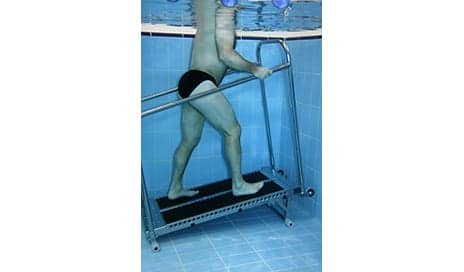A study comparing aquatic treadmill training to conventional treadmill walking among post-stroke patients suggests that the benefits of aquatic exercise may outweigh those from a traditional treadmill.
The study was published recently in American Journal of Physical Medicine & Rehabilitation, the official journal of the Association of Academic Physiatrists, published by Wolters Kluwer.
The research was performed by Bo Ryun Kim, MD, PhD, and colleagues from Jeju National University Hospital, Korea.
In the study, 21 patients recovering from a stroke underwent two exercise tests: one on a conventional treadmill, and one on an aquatic treadmill, submerged in water up to their chests.
In both tests, explains a media release from Wolters Kluwer, walking speed and slope were gradually increased until the patients felt they couldn’t go any further. Researchers then compared the patients’ measures of exercise capacity between the two tests.
Two key measures were higher on the aquatic treadmill test: maximal oxygen consumption (VO2max), reflecting heart and lung function during exercise; and metabolic equivalents (METs), reflecting energy use. Heart rate was not significantly different, but was significantly related to oxygen consumption on both tests.
“The fact that the aquatic treadmill efficiently provides aerobic exercise without requiring full weight bearing means that it may be highly suitable for rehabilitation after stroke,” according to the authors, per the release.
“Aquatic treadmill exercise may not only improve baseline functional status and functional recovery during the subacute period, it may also enhance social participation and quality of life during the chronic stroke period,” they add.
[Source(s): Wolters Kluwer Health: Lippincott Williams and Wilkins, Newswise]





